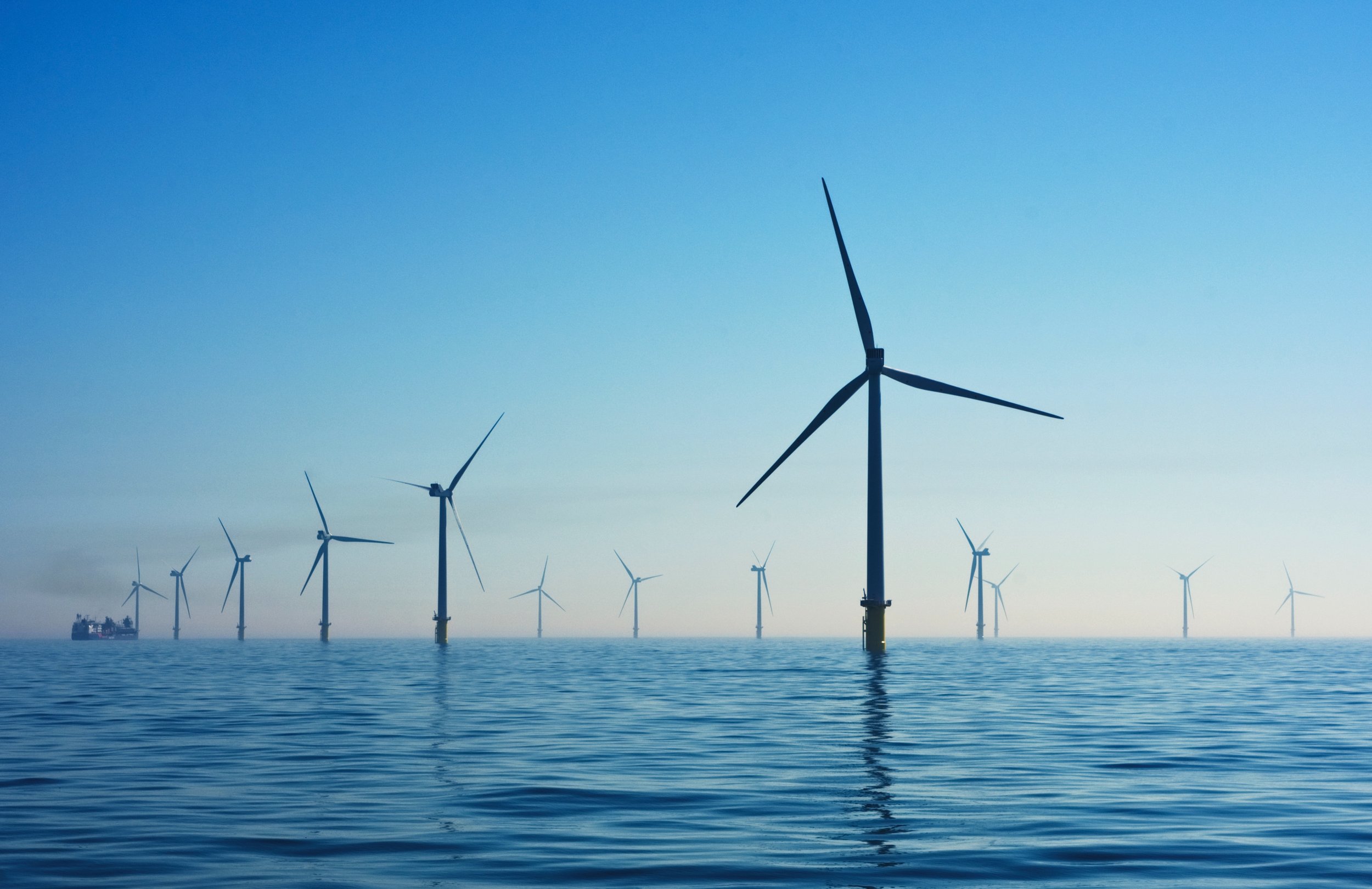
Offshore Wind
What is it?
Offshore wind power or offshore wind energy is the energy taken from the force of the winds out at sea, transformed into electricity and supplied to the electricity network onshore. It is constantly renewable and offers an infinite energy source that is relatively cost-effective to exploit. The UK is already a world leader in offshore wind power production and has committed to funding and resourcing further growth in the industry.
How does it work?
Fixed offshore wind farms are strategically positioned in the windiest and shallowest locations off the UK coastline. They can be made up of hundreds of wind turbines, which use the wind to spin blades creating kinetic energy, a generator inside the turbine then converts this kinetic energy into electrical energy. The electrical energy is then fed into a transformer which increases the voltage so that it can be used by the national grid.
You win with wind (Credit: Renewable UK)
What are the advantages of offshore wind?
Topography – As the UK is an island nation, it has a large area of coastline with shallow seabeds that are essential for the construction of offshore wind farms. Due to the shape of the UK, the population centres are centred at comparatively short distances from the coast. Therefore, less energy is lost through transmission and distribution as the energy travels from the wind farms to the areas where it is needed most.
Climate – The UK experiences above-average wind speeds in comparison to the rest of Europe. These wind speeds tend to be even faster and more consistent offshore. Therefore, combining both climate and topography, the UK is perfectly placed to exploit the benefits of offshore wind.
Distance from local populations – Offshore wind farms tend to be out of sight, and too far away to generate noise that could frustrate residents.
Cost efficiency – Due to investment in technology and increasing availability, offshore wind is now a more cost-efficient energy source than many fossil-fuel-driven alternatives.
What are the disadvantages of offshore wind?
Impact on birds and marine life – Wind farm developers work closely with environmental groups to monitor the impact that wind turbines can have on local wildlife. Practices to mitigate this are in place, however, research into how wind farms affect habitat loss, and disturb flying patterns is still ongoing.
Weather – Despite providing an infinite power supply, the wind speed is not constant. During periods of low wind, the energy generation potential of wind farms is significantly reduced. This lack of consistency presents a challenge that wind turbine producers are constantly attempting to overcome via improvements in turbine technology.
Current energy production?
In Q1 of 2022, offshore wind was the largest producer of renewable energy in the UK, accounting for 14.9% of total electrical energy produced.
Where are the offshore wind farms located?
The illustration shows that offshore wind farms tend to be positioned off the East coast of the UK in the North Sea. A point to note is the Head Offices of the wind farm companies don’t necessarily have to be positioned close to the coast, this is important when looking for a job role in relation to location. i.e. you don’t have to live by the coast to work in this industry.
Offshore wind locations UK (Credit: Renewable UK)
Future projects and development of offshore wind
Currently, offshore wind farms are restricted by water depth as the wind turbines have to be fixed to the sea bed. Floating wind turbine technology is now becoming available which will negate this limitation, allowing wind farms to be positioned at greater depths, further away from the coastline. As the windfarms move further away from the coast, they will access a faster and more constant wind speed, which improves the energy production capacity and predictability.
The UK government has the ambition to deliver 50 Gigawatt (GW) by 2030 of offshore wind, including 5GW of pioneering floating wind. To reach this goal, several new projects have been commissioned:
· Doggerbank Project - https://doggerbank.com/
· Hornsea Project 2 - https://hornseaprojects.co.uk/hornsea-project-two
· Hornsea Project 3 - https://hornseaproject3.co.uk/
Key Projects in the industry
Hornsea Project 1 - https://hornseaprojectone.co.uk/
Triton Knoll - https://www.tritonknoll.co.uk/
East Anglia One -https://www.scottishpowerrenewables.com/pages/east_anglia_one.asp
Walney Extension - https://orsted.co.uk/energy-solutions/offshore-wind/our-wind-farms/walney-extension
London Array - https://londonarray.com/
Constructing Hornsea Two, the world’s largest offshore wind farm (Credit: Orsted)
Dogger Bank Project (Credit: Greener Living)
Offshore Wind Sector Guide
Mission Renewable has worked alongside industry to put together a complete guide for service leavers, veterans and spouses/partners looking at the offshore wind industry. This includes details on the roles available and future pathways into the industry. Click on the image to find out more!


